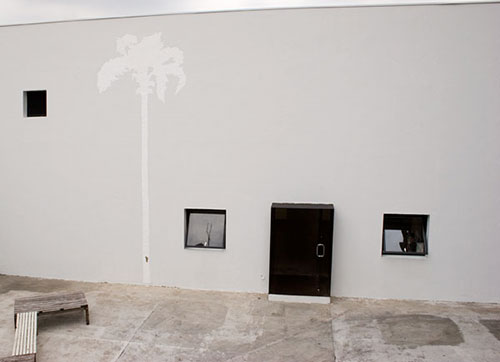
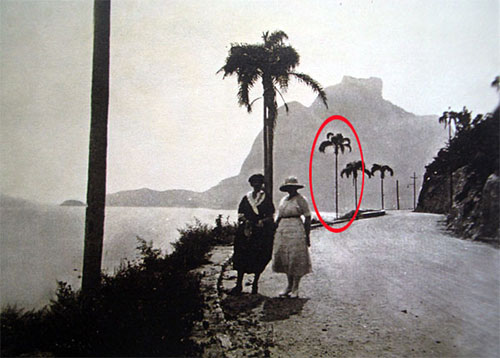
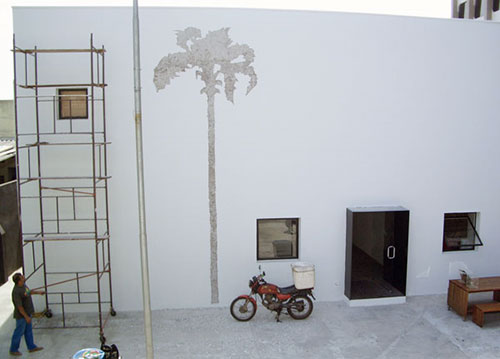
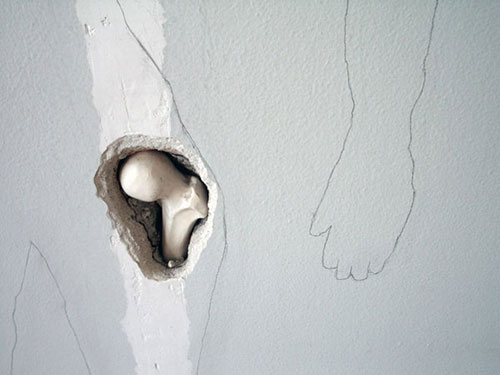
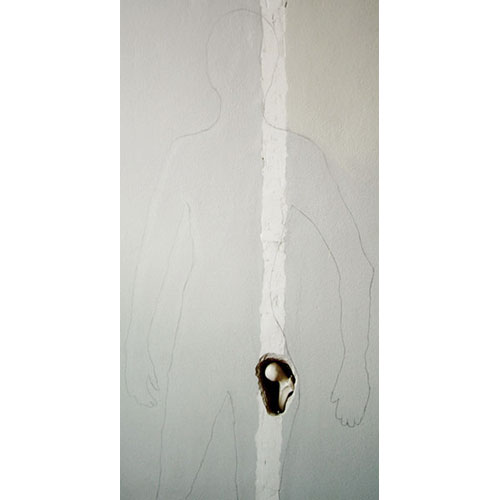
The Vermelho gallery`s facade acts, in this project, as a component of the urban landscape. The rectangle drawn by the architect relates to the view the top of the Pacaembu district, which the gallery building hides, as a horizontal surface configuring the landscape mode.
The image projected by me for that surface appears related to the representation of the Brazilian landscape, in which Imperial palm trees in rows organize the access to buildings, or they stand out as solitary vertical figures, quietly testifying the composition. In our tradition of landscape representation, palm trees seem to symbolize an exotic place and the tropical climate, serving as an identifier of personality, origin, and nationality.
The work for the gallery`s facade embeds the image of the palm tree in the building, overlapped by a human figure, in a composition that refers to the formation of the Brazilian landscape.
The palm tree used in “Palma Mater” was extracted a photo dated 1907, attributed to an anonymous photographer known as German Amateur. The image was transferred to the gallery`s facade, and the wall`s plaster was removed within the drawing, resulting in the emergence of the palm tree`s silhouette on the mortar base. The dug-up image was then filled with plaster, bringing to view the image of the now white palm tree, contrasting with the wall, previously painted in gray.
On the image of the white plaster palm tree, a human illustration was drawn starting the contour, in pencil, of the body of a model leaning on the wall. That mark stayed close to the palm tree, with the area of the left hip over its stem. At that point of intersection, a deeper opening was made on the wall and a femur bone was introduced, modeled in white porcelain.
Teresa Berlinck, March 2006
full text